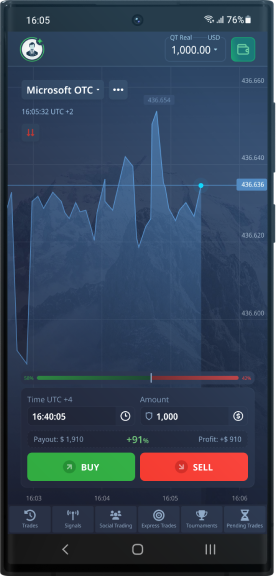
Pocket Option RSI Strategy: Unlocking Trading Potential
The Pocket Option RSI Strategy is a powerful trading technique that leverages the Relative Strength Index (RSI) to provide traders with significant insights into market trends and potential entry and exit points. This strategy not only emphasizes technical analysis but also incorporates fundamental trading principles, making it a well-rounded approach. For traders looking for a systematic method of harnessing RSI, Pocket Option RSI Strategy Pocket Option Стратегия RSI serves as a beneficial tool. In this article, we will explore the intricacies of this strategy, how to implement it, and tips for maximizing its effectiveness.
Understanding the RSI Indicator
The Relative Strength Index (RSI) is a momentum oscillator that measures the speed and change of price movements. It moves between 0 and 100 and is typically used to identify overbought or oversold conditions in a market. When the RSI is above 70, the asset is considered overbought, while an RSI below 30 suggests the asset is oversold. This information is pivotal for traders looking to make informed decisions based on market sentiment and price behavior.
Why Use the RSI in Trading?
The use of RSI in trading is prevalent due to its reliability and simplicity. It gives traders a tangible method to assess market conditions without needing intricate algorithms or difficult calculations. By using the RSI, traders can filter out noise in price movements, helping them to focus on genuine market signals. Additionally, RSI can be effectively combined with other indicators, making it a versatile component within a broader trading strategy.
The Components of the Pocket Option RSI Strategy
To successfully implement the Pocket Option RSI Strategy, traders need to adhere to several critical components:

- Setting the RSI Period: For short-term trades, a standard setting of 14 periods is recommended. However, traders may adjust the period based on their trading style and the asset they are analyzing.
- Identifying Overbought and Oversold Levels: The classic overbought level is set at 70, while the oversold level is set at 30. Monitor these levels to make informed trading decisions.
- Divergence Analysis: This involves identifying situations where price action is moving in the opposite direction of the RSI. Divergence can signal potential reversals.
- Confirmation from Other Indicators: While RSI is effective alone, using it in conjunction with other indicators (like moving averages) can provide additional confirmation for trades.
Step-by-Step Guide on Using the Pocket Option RSI Strategy
Implementing the Pocket Option RSI Strategy can be simplified into a step-by-step approach:
- Select Your Asset: Choose a currency pair or asset with sufficient volatility to ensure that there are enough price movements for the RSI to react.
- Set Up Your Chart: Add the RSI to your chart with a 14-period setting. Adjust the overbought and oversold levels as per your strategy preferences.
- Analyze RSI Levels: Look for instances where the RSI crosses above 70 or below 30. This can indicate potential entry points for short or long positions respectively.
- Check for Divergence: Use divergence analysis to spot possible price reversals, adding confidence to your trading decisions.
- Use Additional Confirmatory Signals: Incorporate signals from other technical indicators like SMA (Simple Moving Average) or MACD (Moving Average Convergence Divergence) to confirm your trade.
- Set Your Risk Management Levels: Always set stop-loss orders to protect your capital and define your risk-reward ratio.
- Monitor Your Trades: Continuously observe your trades, and be ready to exit the position as RSI signals change.
Tips for Maximizing the RSI Strategy
To enhance the effectiveness of the Pocket Option RSI Strategy, consider the following tips:
- Practice with a Demo Account: Before risking real funds, practice using the strategy on a demo account to gain confidence and improve your skills.
- Stay Updated on Market News: Economic news can significantly impact asset prices. Being informed can help you anticipate market movements that may not be reflected in technical indicators.
- Adjust Your Strategy Based on Market Conditions: What works in trending markets may not be effective in ranging markets. Be adaptable to changing conditions.
- Keep Emotions in Check: Trading can be emotional. Stick to your strategy rather than making impulse decisions based on fear or greed.
- Review and Refine Your Strategy: Continuously review your trades and the effectiveness of your strategy. Make necessary adjustments based on your trading results.
Conclusion
The Pocket Option RSI Strategy offers traders a reliable framework for making informed trading decisions. By understanding the RSI and effectively integrating it with other technical tools, traders can increase their chances of success. It is essential to practice the strategy regularly, adapt to market conditions, and maintain a disciplined approach to trading. As with any strategy, the key lies in diligent analysis, risk management, and the ongoing pursuit of trading education.




























